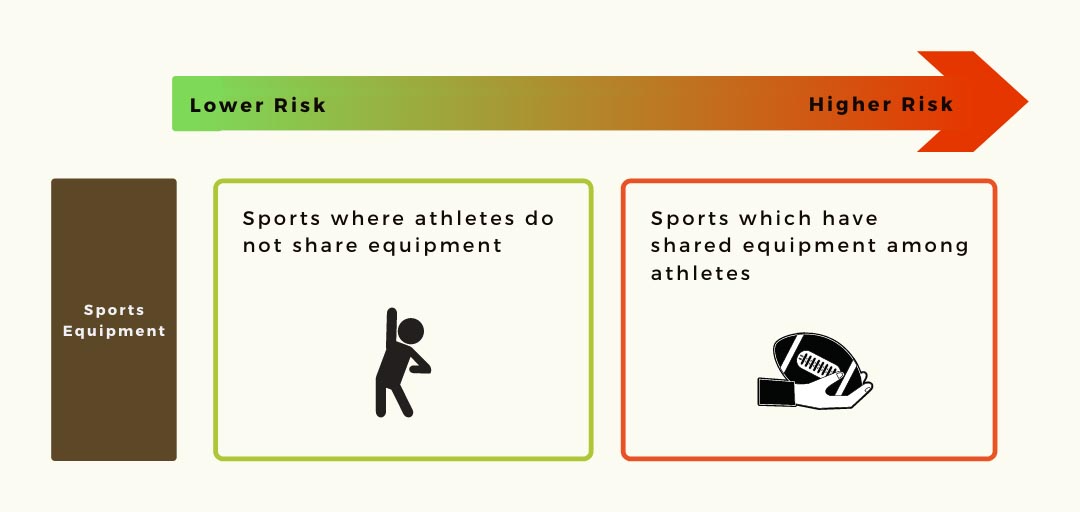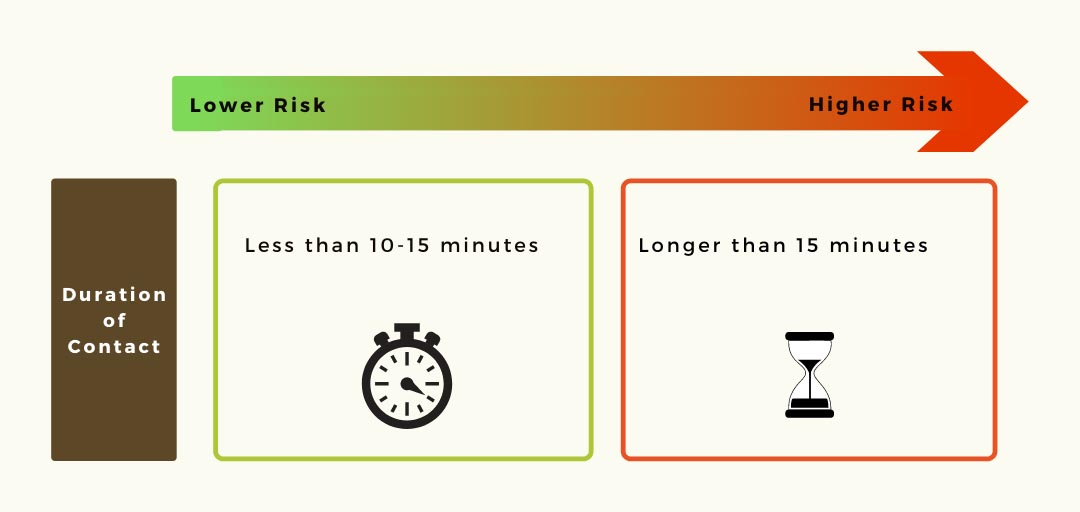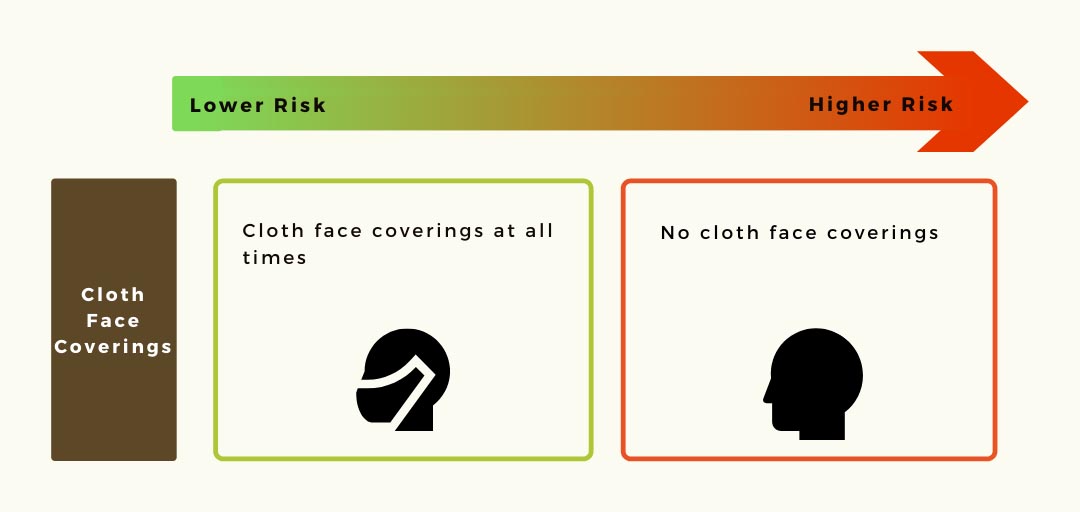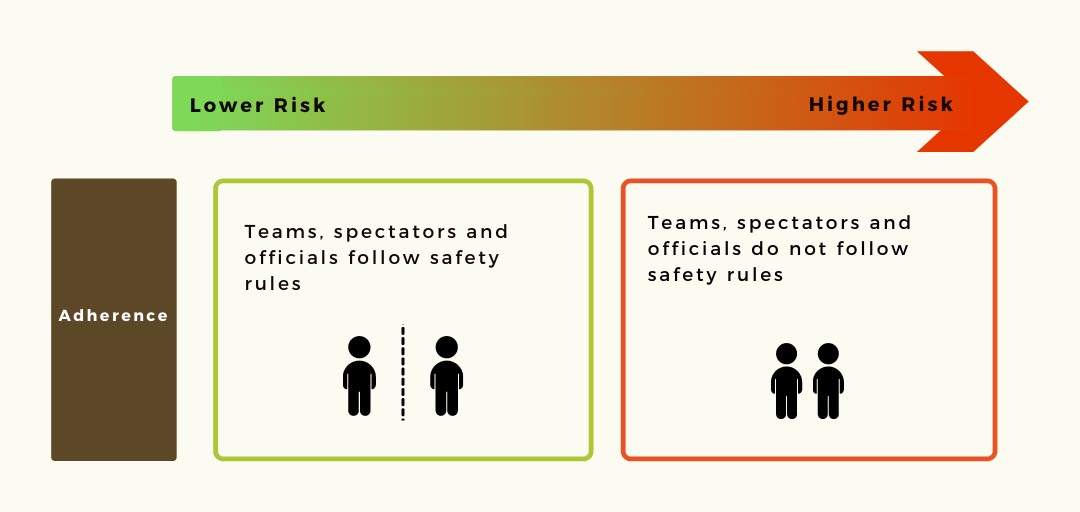As the COVID-19 pandemic continues, you may wonder if it's safe for your kids to participate in organized sports—especially if they're not yet eligible for COVID vaccines.
It helps to understand the rules everyone needs to follow during the COVID-19 pandemic to prevent the virus from spreading. It is also important to consider how many people are infected with the virus in your community, and what is best for your family.
To you make an informed decision, we have broken down some key risk factors associated with sports participation during the pandemic.
What type of sport or activity is it?
Sports and physical activities that allow for individual participation and
physical distancing, like golf or singles tennis, are going to be less risky than sports that involve a lot of close contact like basketball or wrestling.

Do players share equipment?
Sports and physical activities without shared equipment, like cross country, will likely be less risky than sports such as football that are played with a shared ball.

How long are athletes in contact with each other?
Sports and physical activities with limited exposure to other players may be a safer option. A sprint in a track race, for example, may be less risky than sports that put someone in close contact with another player for an extended period of time, like an entire half of a game.

Is it an inside or outside sport?
Where athletes train, practice and compete also impacts risk. COVID-19 is more likely to spread in closed indoor spaces with poor ventilation. Indoor sports and activities will likely be more risky, evidence suggests, especially wrestling and ice hockey. Choose outdoor venues for sports and classes whenever possible.

How many players are on the team?
The more people someone interacts with, the greater the chance of COVID-19 exposure. So small teams, practice pods or classes that stay together, rather than mixing with other teams, coaches or teachers, will be a safer option. This will also make it easier to contact individuals if there is an exposure to COVID-19.

Do the teams travel?
Staying within your community will be safer than participating on travel teams. Traveling to an area with more COVID-19 cases could increase the chance of transmission and spread. Travel sports also include intermixing of players, so athletes are generally exposed to more people.

Are face masks being worn?
Wearing face masks reduces the spread of SARS-CoV-2, the virus that causes COVID-19. Masks are extra important at sport events where it's common for coaches, players, officials and spectators to raise their voices shouting, singing or chanting. Athletes should wear face masks for all practices and competitions, except in certain sports that could be less safe with masks or those with low SARS-CoV-2 transmission risk. Coaches, officials, volunteers, and spectators should also wear face masks.

Is everyone following COVID-19 safety procedures?
In order to create safer environments for everyone, new safety procedures should be in place for practices and games. Parents, athletes, coaches and officials need to work together to help keep everyone healthy and safe by following them! When people do not follow these precautions, it can put the whole team at risk. So remember to be a good teammate and fan and follow the new safety rules.
See
Youth Sports Participation During COVID-19: A Safety Checklist for more information.

Remember
Participating in sports and other physical activities offers a lot of benefits for children and young people. It can improve cardiovascular health, strength, body composition, and overall fitness.
Exercise even has immune system benefits. Plus, socializing with friends and coaches, and returning to a more structured
routine, can
boost a child's mental health. But consider the risks involved during the pandemic, and make sure the chance of being exposed to and spreading the virus can be kept to a minimum.
More Information
This information was adapted from material developed jointly by the American Academy of Pediatrics and:

